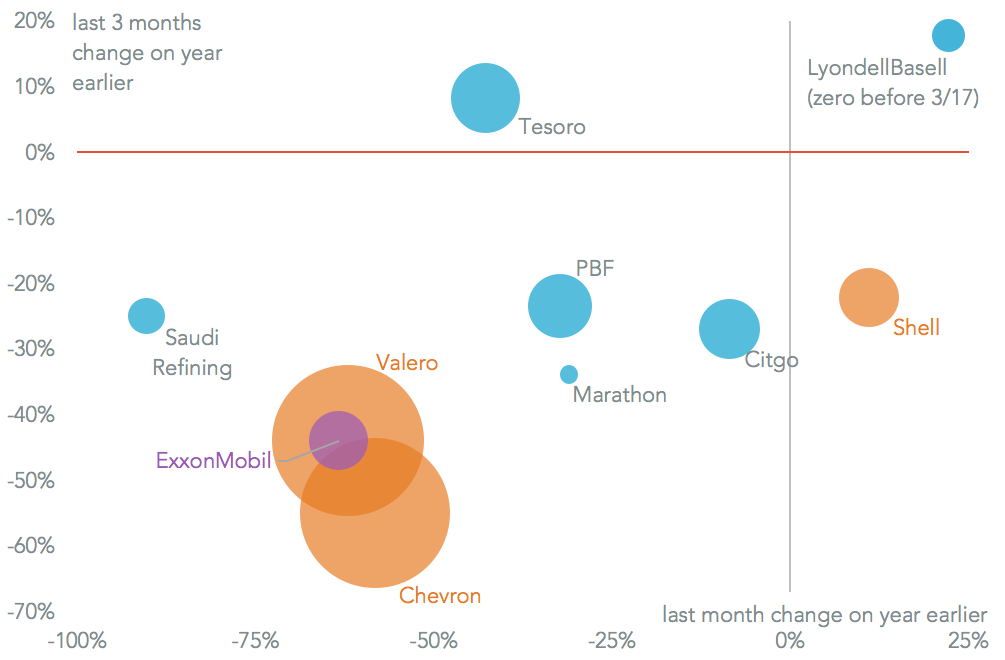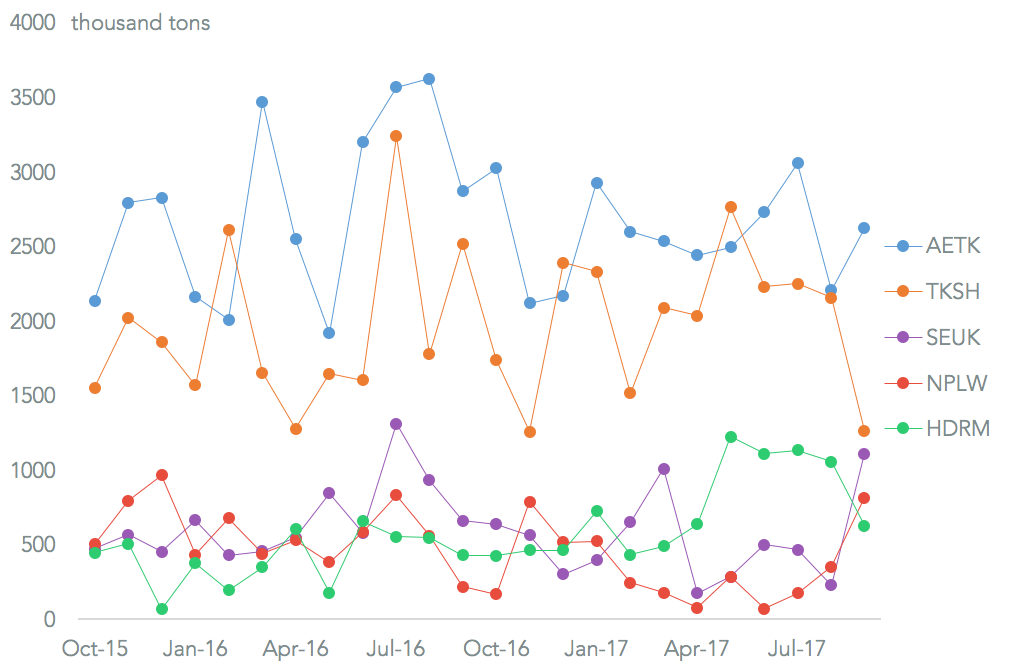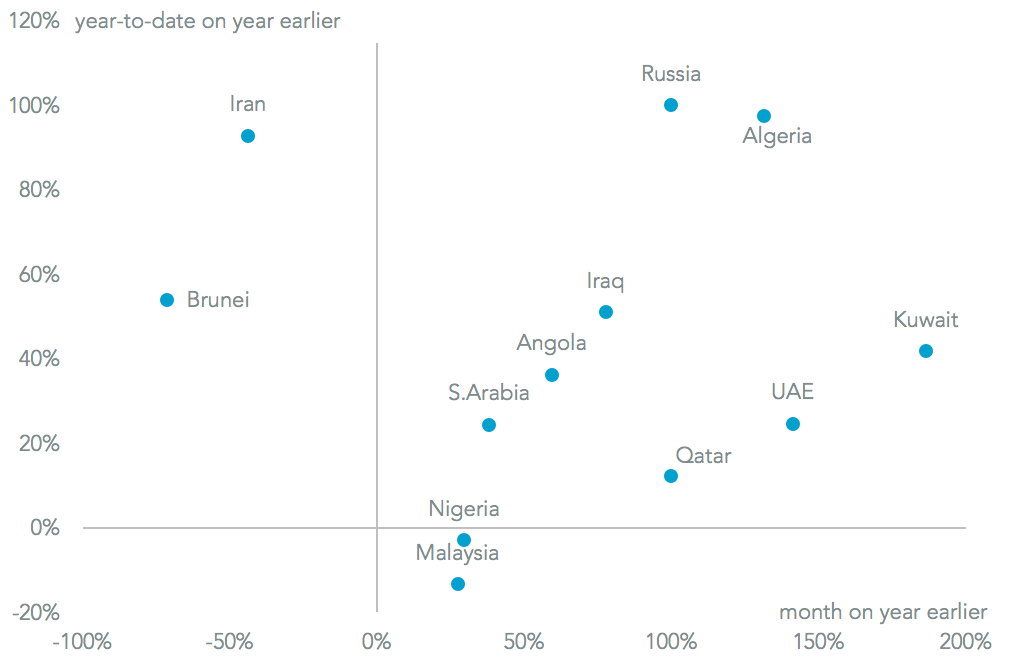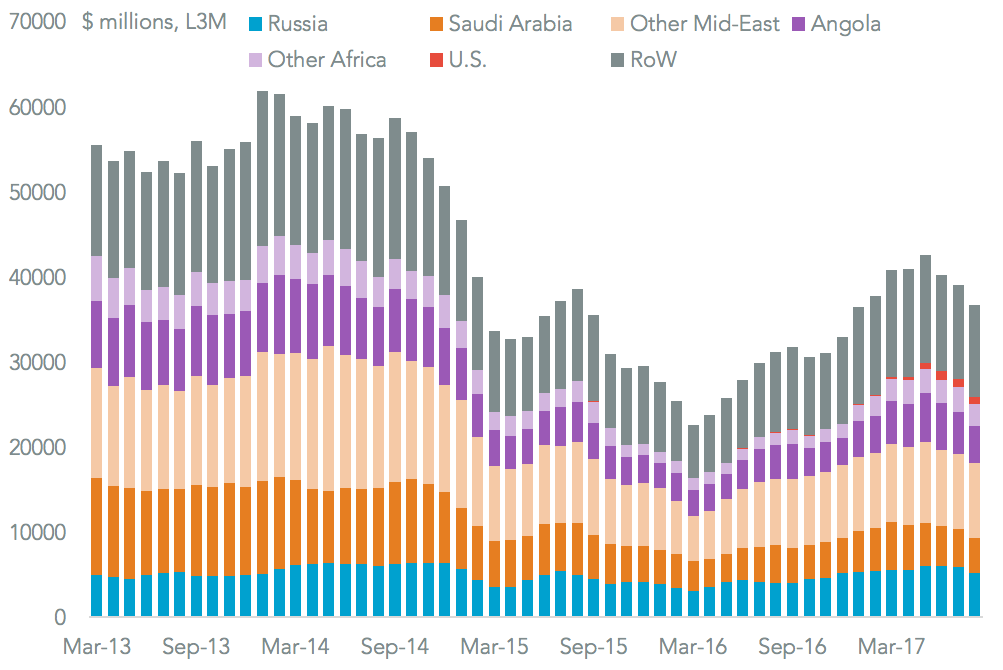The global demand for oil continues to grow unabated. Panjiva data shows U.S. imports increased 11.4% on a year earlier in August, the tenth straight month of growth. While EIA data suggests there was an 8.8% drop on a year earlier, due to a 12.7% sequential decline, that was the result of Hurricane Irma. Exports did increase, by 17.5% in August, but were just 11.9% of imports – the lowest ratio since December. U.S. energy independence, at least in terms of crude oil, remains a distant dream.

Source: Panjiva
As can be expected from the prevalence of refineries on the gulf of Mexico, the Hurricane interruptions greatly cut refiners’ need for imports. Among the majors both Chevron and Valero saw marked declines, with Chevron’s imports falling 58.3% on a year earlier in September, Panjiva data shows, and Valero’s by 62.1%. Shell meanwhile saw an 11.0% expansion – it has a broad distribution of assets around the country.

Source: Panjiva
The slowdown in September also marks the end of a tough quarter for the tanker operators. Teekay appears to have suffered the most, with a 49.8% drop in handling on a year earlier translating into a 24.7% slide in volumes for the quarter. MISC’s AET did better, with a drop of 8.7% on a year earlier due to an increase in September vs. August, but it still saw a 21.7% annual drop in the third quarter. Shell’s inhouse shipper did best, inline with the requirements of the group’s refinery operations.

Source: Panjiva
The tanker operators may have fared better elsewhere in the world. India’s imports of crude oil grew by 52.7% on a year earlier in August in dollar terms. Increased shipments from Iraq (77.7% higher) and the UAE (141.2% above the prior year) were the main drivers though imports from Kuwait grew the quickest. Only a handful of shipments has so far arrived in India from the U.S. The growth in imports is supporting a rapid growth in refined oil products, which grew 41% in September, as outlined in Panjiva research of October 16.

Source: Panjiva
In China meanwhile imports in August climbed 9.8%, with a process of diversification continuing that may also help shipping operators. Imports from Saudi Arabia fell 5.9% in the last three months to August 31, while those from the rest of the Gulf rose 12.7%. However, oil from Russia – which comes in part by pipeline – also expanded 27.8%. Exports of oil from the U.S., finally, accounted for 2.4% of the total, up from zero a year earlier.

Source: Panjiva




